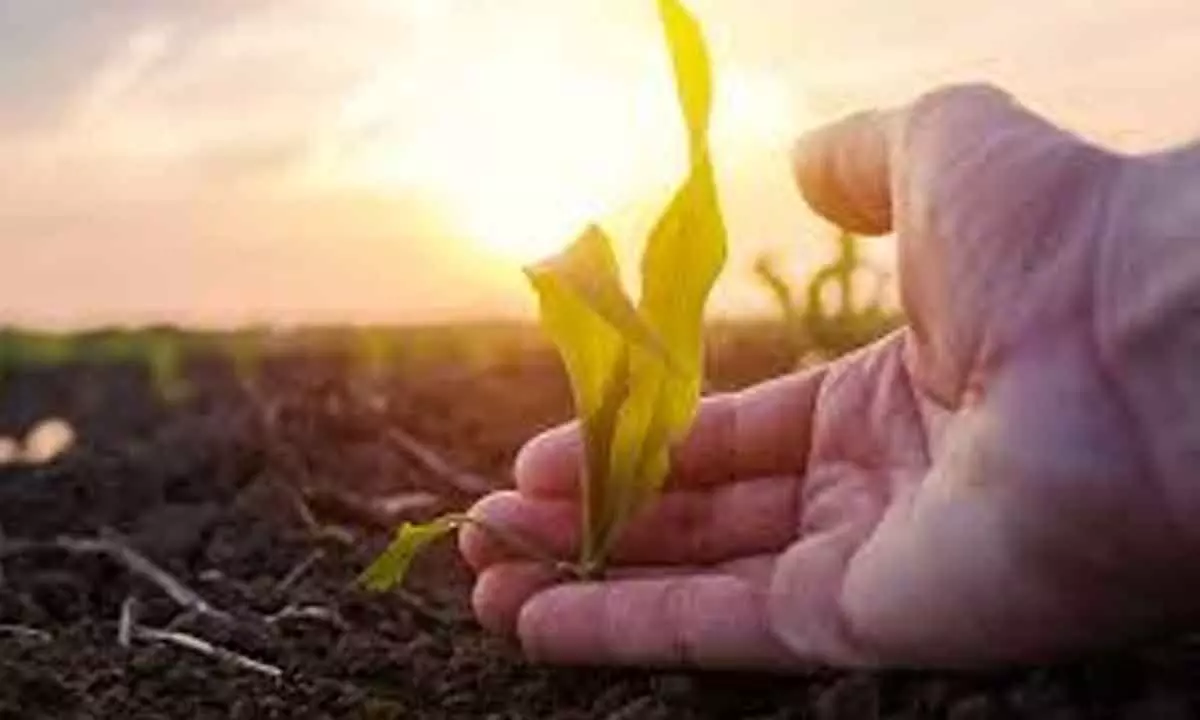Live
- Pani releases on Sony LIV on 16th January; Joju George’s directorial debut explores loyalty, justice and truth
- Free Fire Max Redeem Codes for January 10: Get Exclusive Rewards
- Smell fresh with these top perfume picks for 2025!
- AP CM Chandrababu inaugurates NAREDCO property show
- Thoughtful and Unique Lohri Gifting Ideas to Spread Warmth and Cheer
- Asha Workers Stage Protest at Jadcherla MLA Camp Office, demanding hike in salary and other employee benefits
- Surprising Health Benefits of Eating Sprouts
- Purandareswari Emphasizes Cultural Education at YN College Diamond Jubilee Celebrations
- Andhra Pradesh Real Estate: Emerging Cities to Invest in 2025
- National Youth Day 2025: Celebrating Youth Empowerment and Swami Vivekananda’s Vision
Just In
Organic farming Food, soil and decarbonisation


Carbon capturing technology is big business today. Currently estimated to be worth around $5 billion, this is one of those interesting and very...
Carbon capturing technology is big business today. Currently estimated to be worth around $5 billion, this is one of those interesting and very practical technologies within the larger green economy that is poised to grow manifold in the coming years.As a circular economy idea, it involves capturing CO2 from large production sites like power, cement or steel plants and storing them underground or shipped for industrial applications such as improving oil and gas extraction etc. We also have carbon capturing factories that sucks out atmospheric carbon, something very similar to what plants do through photosynthesis.
While carbon capturing technology is a commendable piece of engineering and another tool in our arsenal to fight climate change, we often forget that we have had a different kind of carbon capturing mechanism for much longer and comes without any patented technology - soil. Yes, the soil we grow our food in is a living and breathing carbon capturing being, provided our farming practices allow the soil to do its job properly. Simply put, organic farming is a very efficient way to decarbonize our planet. This is one of the reasons why there is now a universal awakening around organic farming and it’s far reaching impact on our long-drawn fight against climate change.
For most of us chemical-free agricultural produce is organic food. While this is true,it hardly paints the full picture. Organic farming not only keeps fertilizers and pesticides harmful for human consumption from entering our food chain but also comes with some best practices that traditional farms don’t.
It is a very common practice, particularly in the northern parts of India to burn leftover plant debris (after harvest) to prepare the soil for the next crop. This menace called stubble burring, unique to chemical-fed farms, is an annual environmental disaster unleashed ahead of the harsh winter season. One the other hand, a professionally managed organic farm, interspaces two crops with a cover or forage crop that not only not pollute the air but is a great way to replenish nutrients back to the soil. For example, Alfalfa (a flowering plant from legume family), a common cover crop, is not only fodder for farm animals but is also nitrogen fixer for the soil. Unlike in traditional farms, organic farms suppress weed through intercrop and a multi-crop strategy. Here again, post-harvest stubble areploughed back as mulch for the next crop cycle.
On an acre to acre comparison, because of its density, green covers like alfalfa or any grass for that matter captures carbon better than trees. I have nothing against large scale afforestation projects, but if we are looking for more efficient green lungs, grass does the job better.
Furthermore, standard organic farm techniques like hedging, bunding and trenching not only provide more efficient ways to retain and use water in the soil but also helps preserve soil nutrients thus creating an endless and virtuous crop cycle.
Finally, animal integration with the farm is another essential element of organic farming, as a source of food, bio-fertilizer for the farm and biogas as energy.
Today’s organic farmers, also called climate farmers are not only producing healthy and nutritious food, but are able to do it while rejuvenating the soil and reducing carbon in the environment. Again on an acre to acre comparison today’s organic farmers are doing far better than their traditional peers tethered to chemicals, government subsidy, and loan sharks, and trying to eke a living out of their degrading soil.
More than 70 countries accounting for three fourths of the global greenhouse gas emissions have set a Net Zero target year. The efforts to decarbonize our life is going to need every weapon we can come up with. Renewable energy, clean mobility, mainstreaming of circular economy by large industrial polluters, switching to energy efficient household fixtures…the list of things we can do and are doing is quite long. However the most effective route to a decarbonized world should start with paying attention to what we eat and more important how we produce our food.
Estimates of agriculture’s contribution to the global emission is as high as 30% (19% at the lower end) while its share of global GDP is just around 4%. This imbalance is simply not sustainable in the long run and its outcome already evident in countries like India where poor soil health, harmful farm practices and notoriously low productivity is the status quo.Making a U-turn towards organic agriculture will not only improve the quality of our food and farmers’ financial health but also take us closer to our Net Zero goal.
(Written by Shashi Kumar, co-founder and CEO, Akshayakalpa Organic)

© 2025 Hyderabad Media House Limited/The Hans India. All rights reserved. Powered by hocalwire.com






